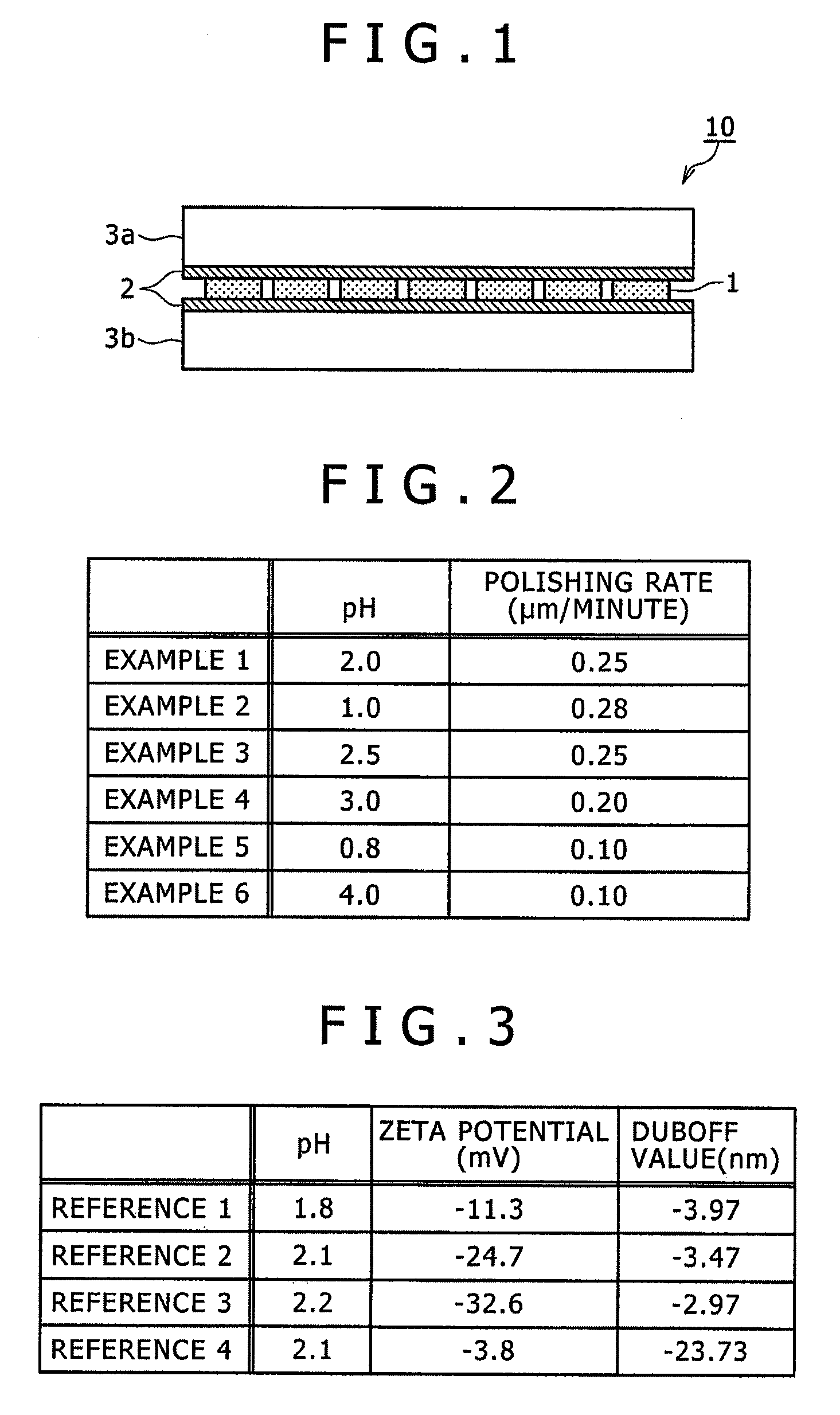Method For Producing Glass Substrate For Magnetic Disk And Method For Manufacturing Magnetic Disk
- Summary
- Abstract
- Description
- Claims
- Application Information
AI Technical Summary
Benefits of technology
Problems solved by technology
Method used
Image
Examples
first embodiment
[0078]Amorphous glass is suited as a glass substrate for magnetic disk. This is because amorphous glass is made very smooth on the surface thereof by mirror polishing unlike, for example, crystallized glass and glass ceramics.
[0079]Multi-component glasses such as aluminosilicate glass and the like are preferably used as a glass material of the glass substrate for magnetic disk. Of glasses, aluminosilicate glass has a feature in that it is better in heat and chemical resistances than, for example, borosilicate glass. Accordingly, upon exposure to a chemical solution such as in a cleaning step, there is a reduced possibility of a mirror-polished surface being roughened excessively and thus, such a glass is suitable for use as a glass substrate for magnetic disk, in which smoothness is especially required. The aluminosilicate glass means a glass containing oxides of silicon and aluminium as main components.
[0080]Although a glass substrate is suited for magnetic disks, a difficulty has ...
examples 2 to 6
[0188]In Examples 2 to 4, tartaric acid was contained as a buffer agent and a composition of a polishing liquid in the mirror polishing step was controlled to change the pH value of the polishing liquid within a range of from 1.0 to 3.0. Other conditions were same as in Example 1. Because of the addition of the buffer agent, no variation in the pH value of the polishing liquid was found with a lapse of time in the mirror polishing step, thereby enabling the liquidity of the polishing liquid to be kept substantially constant.
[0189]On the other hand, in Examples 5 and 6, tartaric acid was contained as a buffer agent and the composition of a polishing liquid in the mirror polishing step was controlled to change the pH value of the polishing liquid within ranges of less than 1.0 or exceeding 3.0. Other conditions were same as in Example 1. Because of the addition of the buffer agent, no variation in the pH value of the polishing liquid was found with a lapse of time in the mirror polish...
second embodiment
[0204]Another embodiment (second embodiment) of the invention is described below. It will be noted that such arrangements as in the first embodiment are not illustrated again for convenience's sake.
[0205]According to further studies made by us, it has been found that the dispersability of polishing grains in a polishing liquid influences the end shape and surface roughness of a glass substrate after polishing. More particularly, it has been discovered that where the dispersability of polishing grains is poor, the polishing grains mutually coagulate, thereby worsening the end shape and surface roughness of the glass substrate after polishing.
[0206]We have examined the problem from various standpoints of view in order to improve the dispersability of polishing grains in the polishing step. As a result, attention has been paid to the zeta potential of polishing grains. It has been found that not only there is a certain relation between the degree of dispersion or coagulation and the ze...
PUM
| Property | Measurement | Unit |
|---|---|---|
| Grain size | aaaaa | aaaaa |
| Nanoscale particle size | aaaaa | aaaaa |
| Zeta potential | aaaaa | aaaaa |
Abstract
Description
Claims
Application Information
 Login to View More
Login to View More - R&D
- Intellectual Property
- Life Sciences
- Materials
- Tech Scout
- Unparalleled Data Quality
- Higher Quality Content
- 60% Fewer Hallucinations
Browse by: Latest US Patents, China's latest patents, Technical Efficacy Thesaurus, Application Domain, Technology Topic, Popular Technical Reports.
© 2025 PatSnap. All rights reserved.Legal|Privacy policy|Modern Slavery Act Transparency Statement|Sitemap|About US| Contact US: help@patsnap.com



